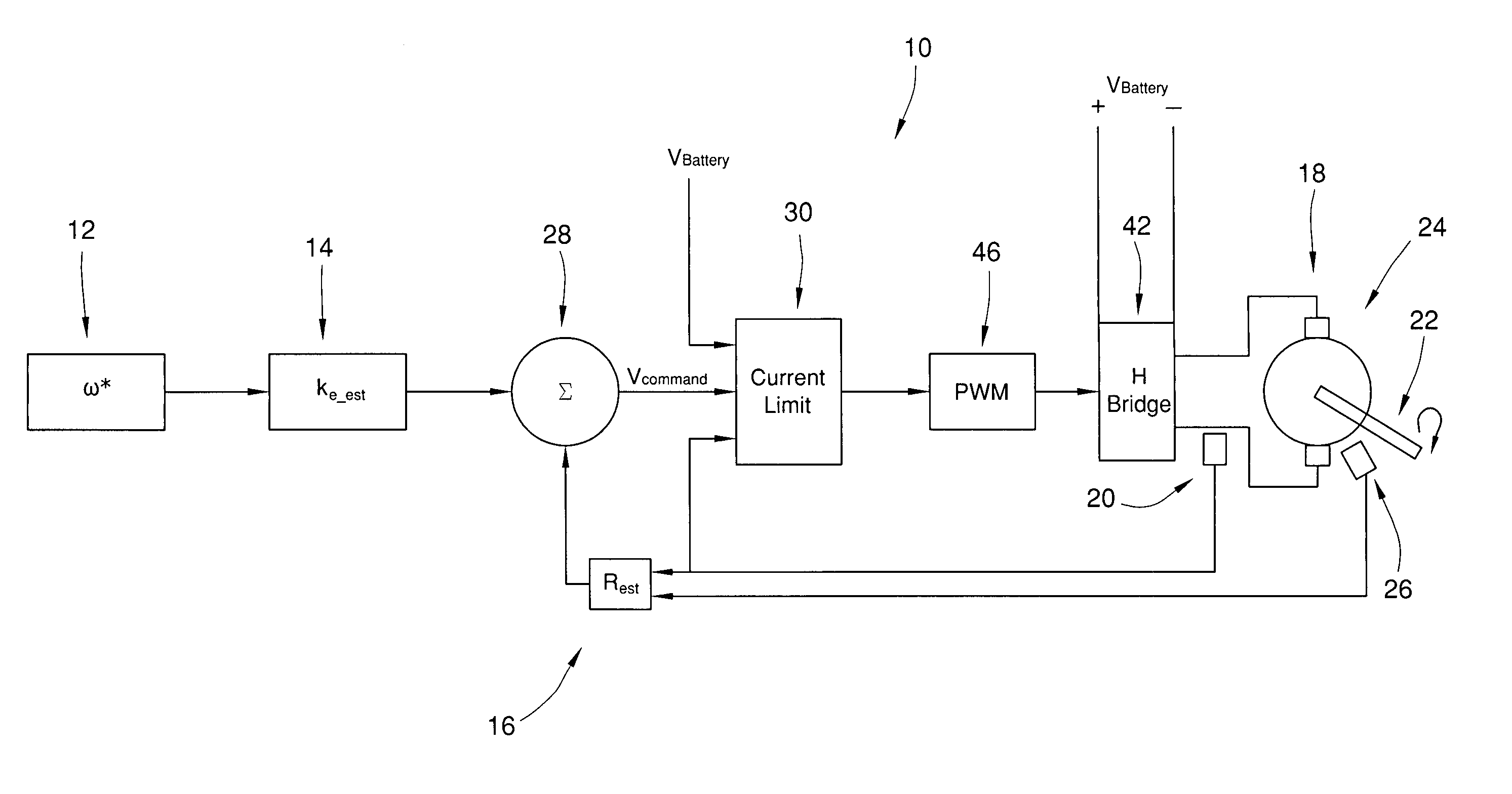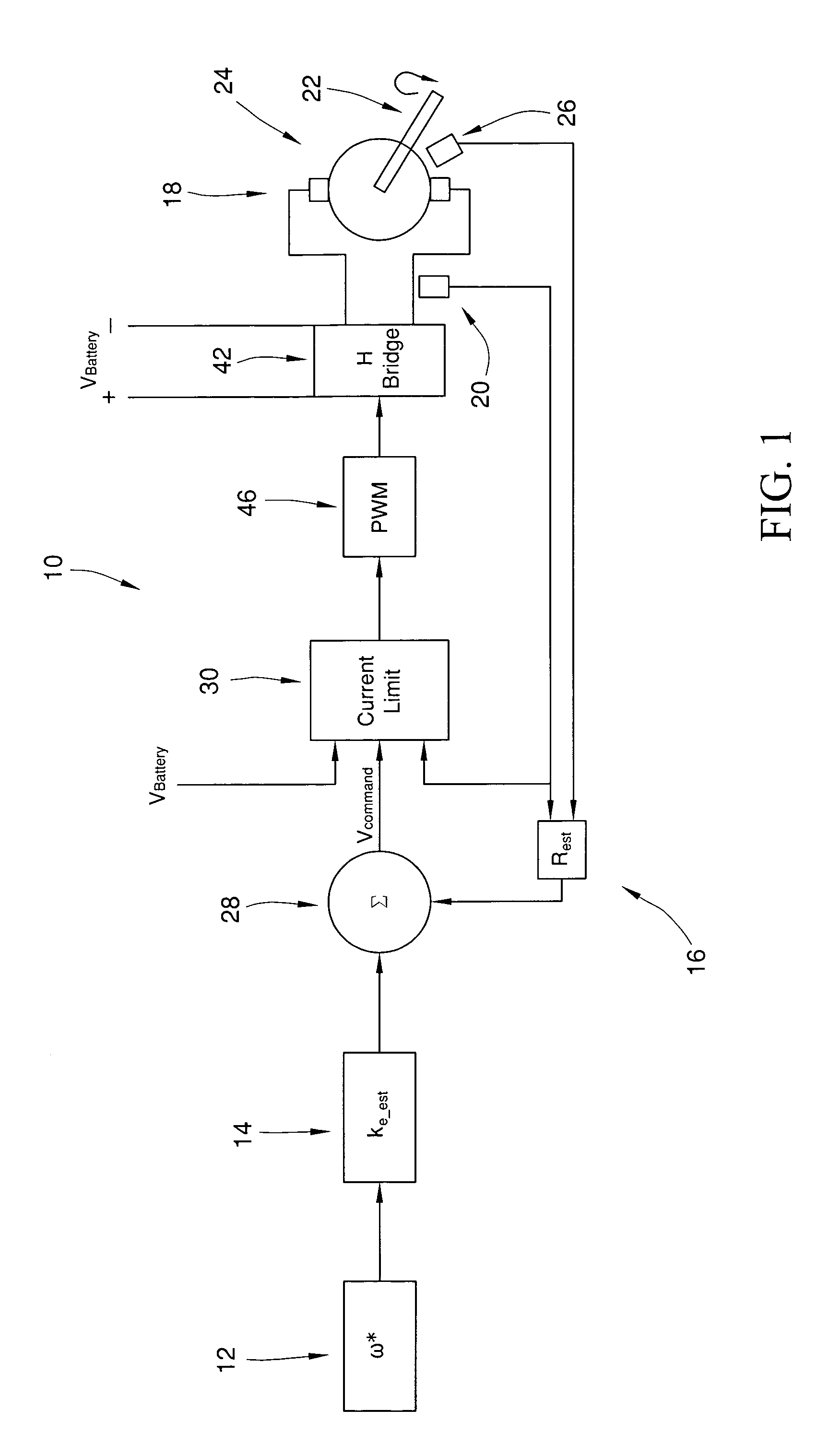Current limiting strategy
a current limit and current limit technology, applied in the direction of electronic commutation motor control, dynamo-electric converter control, starter details, etc., can solve the problems of thermal overload conditions, inapplicability of cascaded speed and current loops, torque loops, etc., and achieve simple low-cost implementation. simple and easy
- Summary
- Abstract
- Description
- Claims
- Application Information
AI Technical Summary
Benefits of technology
Problems solved by technology
Method used
Image
Examples
Embodiment Construction
[0009]The invention provides a method for controlling current in a direct current motor 18 having a back emf constant ke and resistance Rs. The motor may have either a permanent magnet or a field winding to create the needed magnetic flux that determines in part the value of ke. The value of ke is generally constant for a magnet machine but can vary with a field wound machine. For the case of a field winding motor, the value of ke will change based on the value of the field current. A basic form of steady state speed control, IR drop compensation, can be created by recognizing that for a given desired speed the motor voltage must be equal to the sum of the current and Rs product and the emf voltage which is simply the product of ke and rotational speed. These values are not truly known to the controller and are designated ke—est and Rest. FIG. 1 is a simplified schematic diagram of the exemplary embodiment of the inventive method, wherein the steps are performable by a controller. T...
PUM
 Login to View More
Login to View More Abstract
Description
Claims
Application Information
 Login to View More
Login to View More - R&D
- Intellectual Property
- Life Sciences
- Materials
- Tech Scout
- Unparalleled Data Quality
- Higher Quality Content
- 60% Fewer Hallucinations
Browse by: Latest US Patents, China's latest patents, Technical Efficacy Thesaurus, Application Domain, Technology Topic, Popular Technical Reports.
© 2025 PatSnap. All rights reserved.Legal|Privacy policy|Modern Slavery Act Transparency Statement|Sitemap|About US| Contact US: help@patsnap.com



